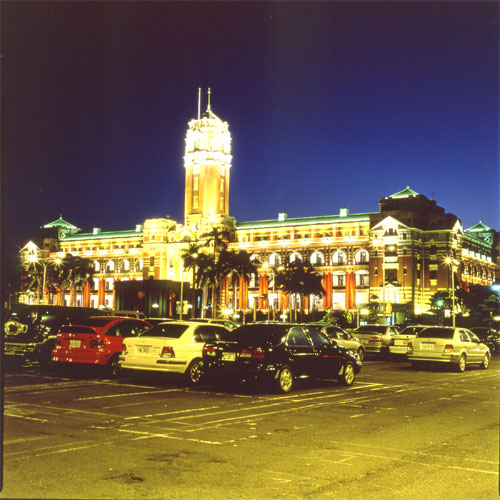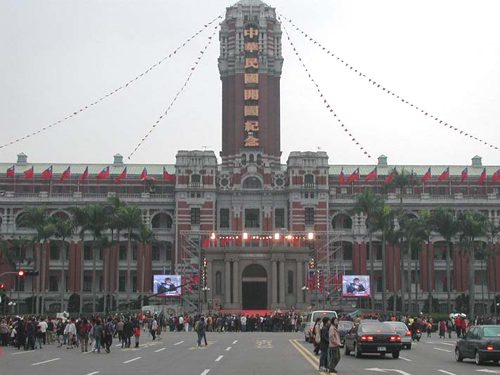Designed after Japanese Fujino Kingo style, this 60-meter-high building was completed in March 1918, six years and nine months after its ground breaking on June 1, 1912. Its construction then cost 1.81 million Japanese yen, which was said to be six times higher than the combined cost of the Lungshan Temple in Wanhua (Taipei), the Chih Nan Temple in Mucha (suburban Taipei) and the Chenghuang Temple in Hsinchu. A solid five-story structure, the main body of the building is built mostly of steel and concrete and partly of bricks and stones and shapes into a Chinese/Japanese character "sun" ("Japan" in Chinese/Japanese means "root of sun"), with one courtyard each on the two sides. This solid building is well organized in structure, symmetric in shape, and distinctive in design.
During the final stage of World War II, bombardments seriously damaged the building. Reparative construction was completed in 1946, and the building was renamed in the same year as Chieh Shou Hall in celebration of the 60th birthday of the then President Chiang Kai-Shek. "Chieh Shou" literally means "wishing President Chiang Kai-shek longevity." Since the nationalist central government was relocated to Taipei in 1949, this building has been used as the Office of the President of the Republic of China.


The Office of President of ROC appears on the following banknote(s):
| |